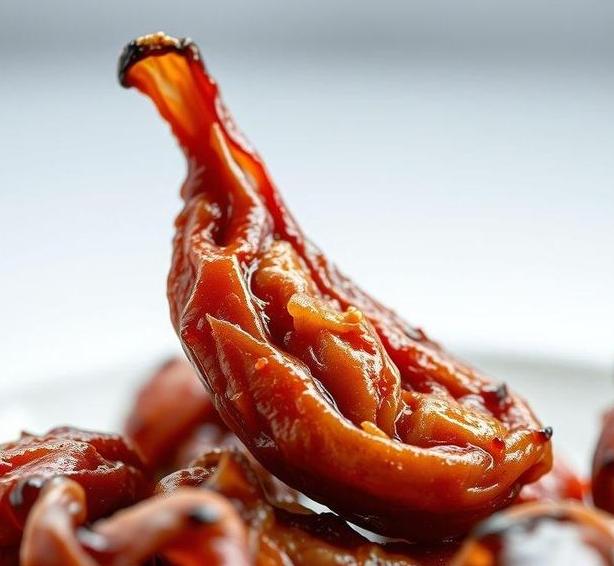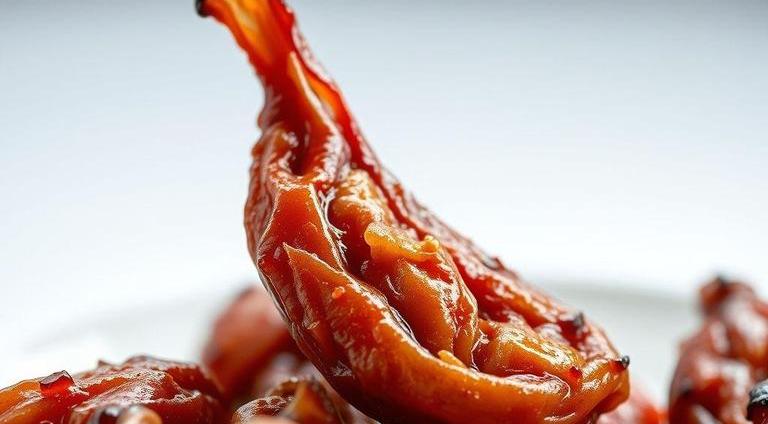Chitterlings, often referred to as "chitlins," are a delicacy that holds deep cultural significance, especially in Southern cuisine, though their history stretches far beyond the U.S. These are the small intestines of pigs, cleaned and cooked to perfection, offering a distinctive flavor and texture. Whether you’re a longtime fan of this dish or just starting to experiment with it, it’s important to understand the shelf life of chitterlings and how to store them properly. Since they are a perishable item, knowing how to care for them is crucial to avoiding any food safety hazards.
Like many types of meat, chitterlings can spoil, but proper storage and attention to expiration dates can ensure that you enjoy them at their best. In this guide, we’ll explore the ins and outs of storing and handling chitterlings, helping you avoid any mishaps when it comes to spoilage.
Can Chitterlings Go Bad?
Absolutely. Just like any other perishable food item, chitterlings can spoil if not handled and stored properly. Since they are a type of offal (the internal organs of an animal), they are highly susceptible to bacterial growth. Chitterlings, due to their high moisture content and organic composition, are an ideal breeding ground for bacteria if left untreated. This means they can go bad relatively quickly if they aren’t refrigerated or frozen immediately after purchase or preparation.
When fresh or cooked chitterlings spoil, they can develop unpleasant smells, change in texture, and even show visible signs of discoloration. Spoiled chitterlings may cause foodborne illnesses such as food poisoning, so it’s crucial to be aware of the signs of spoilage and know how to store them properly.
Shelf Life For Chitterlings

The shelf life of chitterlings largely depends on whether they are fresh, frozen, or cooked. Here’s a breakdown of how long they last in different conditions:
-
Fresh Chitterlings
Fresh chitterlings are highly perishable and should be kept chilled. They usually last:
- In the fridge: 1-2 days after purchase.
- In the freezer: Up to 6 months if properly wrapped or sealed.
-
Frozen Chitterlings
If you buy chitterlings that are already frozen or if you freeze them yourself, they will last much longer. Frozen chitterlings can last:
- In the freezer: Up to 6 months without a significant loss of quality.
-
Cooked Chitterlings
Once cooked, chitterlings still require proper storage. They last:
- In the fridge: 3-4 days.
- In the freezer: Up to 3 months. After that, they may start to lose texture and flavor.
To keep your chitterlings fresh and tasty, it’s always important to check the expiration dates on any packaged chitterlings you buy, and try to freeze them if you know you won’t be able to use them within the recommended time frame.
Common Signs Of Spoilage
There are several ways to tell if chitterlings have gone bad, and recognizing the signs early on can help you avoid eating spoiled food. Here are the most common indicators:
-
Unpleasant Odor
- Fresh chitterlings should have a neutral or mildly meaty smell. If they start to smell sour, rotten, or foul, they have likely spoiled.
-
Discoloration
- If the chitterlings turn gray, green, or any other off-putting color, it’s a sign that they are no longer safe to eat. Fresh chitterlings should be a pale, pinkish color.
-
Slimy Or Sticky Texture
- When fresh chitterlings start to go bad, they may develop a slimy or sticky texture. This is a sign that bacteria are growing, and they should be discarded immediately.
-
Change In Appearance
- Sometimes spoiled chitterlings might have visible mold or even a slimy film. If they look “off” in any way, don’t risk it.
-
Inconsistent Temperature
- If you notice that the chitterlings were left out at room temperature for an extended period, especially beyond two hours, they could be spoiled. Bacteria thrive in the danger zone (40°F to 140°F), so if chitterlings have been in that range for too long, they’re at high risk of spoiling.
If any of these signs appear, it’s better to err on the side of caution and throw them away to avoid foodborne illness.
How To Store Chitterlings?

Storing chitterlings properly can extend their shelf life and ensure that they remain safe and delicious. Here’s how to do it right:
-
For Fresh Chitterlings
- Refrigeration: Fresh chitterlings should be stored in the fridge immediately after purchase. If they came in a plastic bag, leave them in the original packaging or transfer them to an airtight container to avoid contamination.
- Freezing: To extend their shelf life, you can freeze fresh chitterlings. Be sure to wrap them tightly in plastic wrap or use a vacuum-sealed bag to prevent freezer burn. It’s a good idea to divide them into smaller portions for easy defrosting.
-
For Cooked Chitterlings
- Refrigeration: After cooking, let the chitterlings cool to room temperature (no longer than 2 hours) before refrigerating. Store them in an airtight container in the fridge. Make sure to eat them within 3-4 days for the best taste and safety.
- Freezing: If you have leftover cooked chitterlings, freeze them in a freezer-safe container. They’ll maintain their quality for about 3 months, but remember that freezing can sometimes affect the texture.
-
Thawing Chitterlings
- To thaw frozen chitterlings, place them in the fridge overnight or use the defrost setting on your microwave. Never thaw chitterlings at room temperature, as this promotes bacterial growth.
Expert Tips
- Cleanliness is Key: If you’re preparing chitterlings from scratch, ensure that they are thoroughly cleaned. Some people use a mixture of vinegar and water to remove any remaining impurities and odor. Make sure to rinse them under cold running water several times before cooking.
- Cook Immediately or Freeze: Once you’ve cleaned the chitterlings, don’t leave them sitting around. If you’re not planning to cook them right away, freeze them immediately to preserve their freshness.
- Keep Them Cold: Whether you’re storing them in the fridge or freezer, it’s important to maintain a constant, low temperature. Avoid leaving chitterlings out in warm areas for extended periods, especially if you plan on cooking them later.
- Cook Thoroughly: When cooking chitterlings, make sure they are fully cooked to a safe internal temperature (usually 145°F or higher). Undercooked chitterlings can carry harmful bacteria and parasites, so ensure they are tender and fully cooked before serving.
FAQs
How Can I Tell If Chitterlings Have Gone Bad?
Chitterlings that have gone bad will typically have an off or sour odor, a slimy texture, or a change in color. If they smell rancid or rotten, they are no longer safe to eat.
How Long Can Chitterlings Be Kept In The Refrigerator Before They Go Bad?
Fresh chitterlings should be kept in the refrigerator and used within 1-2 days. If they are cleaned and cooked, they can last up to 3-4 days in the refrigerator.
Can Chitterlings Go Bad If Left At Room Temperature?
Yes, chitterlings can spoil quickly if left at room temperature for more than 2 hours. They should be refrigerated immediately after purchase or cleaning to prevent bacterial growth.
What Is The Best Way To Store Chitterlings To Prevent Spoilage?
Chitterlings should be stored in an airtight container or tightly wrapped in plastic wrap and placed in the refrigerator. For longer storage, they can be frozen.
Can Frozen Chitterlings Go Bad?
Frozen chitterlings can last up to 6 months in the freezer if stored properly. However, they may lose quality over time, so it’s best to use them within this period to ensure optimal taste and texture.
What Are The Signs That Chitterlings Have Been Improperly Stored?
Signs of improper storage include freezer burn, an off-putting smell, discoloration, or a slimy texture. These are indicators that the chitterlings have either thawed and refrozen or been exposed to air for too long.
Can Chitterlings Go Bad After Being Cooked?
Yes, cooked chitterlings can spoil after 3-4 days if stored in the refrigerator. They should be properly covered and kept at or below 40°F (4°C). If they develop an off smell or strange texture, discard them.
How Do I Prevent Chitterlings From Going Bad When Cleaning Them?
To prevent spoilage, clean chitterlings in a clean, sanitized area and keep them cool during the cleaning process. Avoid leaving them out for extended periods, and refrigerate them immediately after cleaning.
Can Chitterlings Go Bad If They Are Not Cleaned Thoroughly?
Yes, if chitterlings are not cleaned thoroughly, they can harbor bacteria or other pathogens, leading to spoilage and foodborne illnesses. Proper cleaning is crucial to maintaining their freshness and safety.
What Is The Shelf Life Of Vacuum-sealed Chitterlings?
Vacuum-sealed chitterlings can last 1-2 weeks in the refrigerator and up to 6 months in the freezer. The vacuum seal helps preserve their freshness and prevents spoilage by reducing exposure to air.